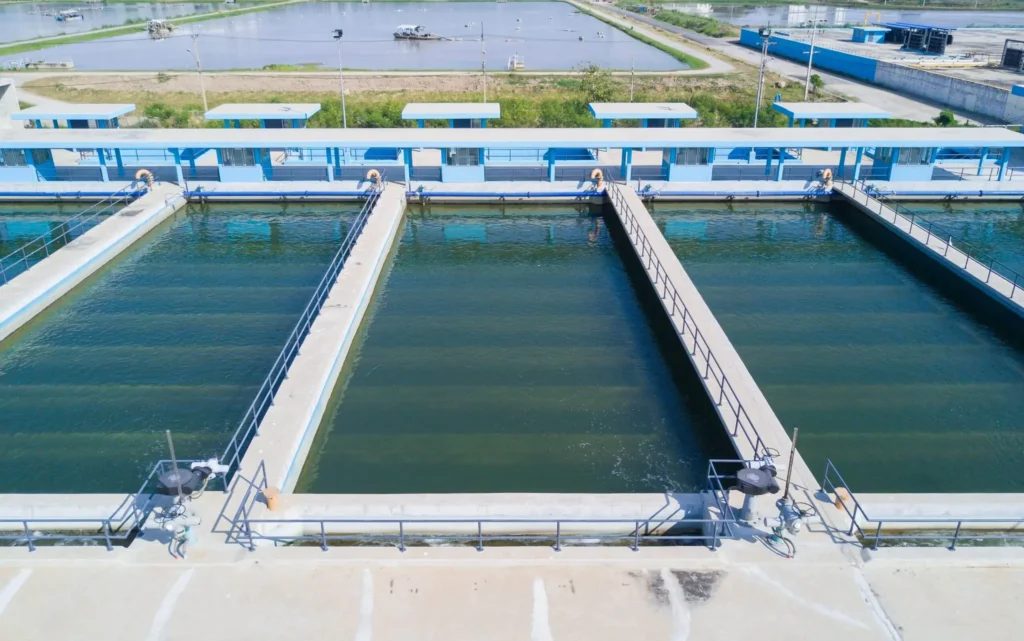Filtration In Wastewater Treatment

Filtration in Wastewater Treatment: A Comprehensive Exploration
Introduction
Ensuring the availability of clean water is one of the most pressing environmental and public health challenges of our times. As global populations soar, so does the volume of wastewater generated by human activities. Wastewater treatment is, therefore, an essential process to mitigate the negative impacts of contaminants on the environment and public health. Central to this process is the practice of filtration, a method that has undergone significant advancements over the years. This article explores the multifaceted world of filtration in wastewater treatment, its methodologies, technologies, benefits, and the challenges it faces.
The Basics of Wastewater Treatment
Before diving into filtration, it is crucial to understand the broader scope of wastewater treatment. Wastewater treatment involves a series of processes designed to remove contaminants from water, making it safe for discharge or reuse. These processes are typically divided into three main stages:
-
- Primary Treatment: This is the initial phase where physical methods are employed to remove large particles and debris. It often involves screening, sedimentation, and flotation techniques.
-
- Secondary Treatment: Biological processes come into play here, breaking down organic matter using microbial action. Techniques include activated sludge processes, trickling filters, and biofilms.
-
- Tertiary Treatment: This advanced stage involves additional physical, chemical, or biological processes to remove any remaining contaminants, often targeting nutrients like nitrogen and phosphorus, as well as pathogens.
Filtration, although relevant in all stages, becomes particularly significant during tertiary treatment but also plays a role in various capacities throughout the entire process.
Types of Filtration in Wastewater Treatment
Filtration can be broadly classified based on the mechanism of filtration and the materials used. Let’s explore the major types:
1. Mechanical Filtration
Mechanical filtration physically separates particles from wastewater by passing it through a porous medium. It is further divided into several types based on the pore size and the filtering medium:
-
- Screening and Straining: The simplest form of mechanical filtration, where water is passed through screens or sieves to remove large particles and debris. Screens can have varying mesh sizes to trap different sizes of particles.
-
- Depth Filtration: This involves a thick medium (like sand, anthracite coal, or other granular materials) where particles are trapped throughout the depth of the medium. Depth filters can handle higher loads of solids compared to surface filters.
-
- Surface Filtration: Using membranes or fabrics, surface filtration captures particles on the surface. Commonly used materials include synthetic fabrics, wire mesh, or natural fibers. The efficiency of surface filters can be high, but they are prone to clogging.
2. Biological Filtration
Biological filtration employs a biofilm of microorganisms to break down organic contaminants in wastewater. The key types include:
-
- Biofilters: These consist of a bed of media (such as gravel or plastic) where microorganisms grow and form a biofilm. Wastewater is passed over this biofilm, allowing microorganisms to degrade the organic pollutants.
-
- Membrane Bioreactors (MBRs): These systems combine biological treatment with membrane filtration. The membranes can block the passage of large macromolecules and retain biomass, which enhances the removal of contaminants.
3. Chemical Filtration
Chemical filtration involves the use of chemicals to precipitate, adsorb, or neutralize contaminants. Various methods include:
-
- Activated Carbon Filtration: Activated carbon is highly porous and has a significant surface area, making it effective for adsorbing organic pollutants, chlorine, and other chemicals.
-
- Ion Exchange Filters: Using resin materials, ion exchange filters can exchange undesirable ions in wastewater with more benign ones. This method is effective for removing heavy metals and other ionic contaminants.
4. Advanced Filtration Technologies
Cutting-edge filtration technologies have emerged to address the growing complexity of wastewater contaminants:
-
- Ultrafiltration (UF): This process uses semi-permeable membranes with pore sizes in the range of 0.01 to 0.1 micrometers. UF is effective at removing bacteria, viruses, and some suspended solids.
-
- Nanofiltration (NF): Operating at the nanometer scale, NF can remove multivalent ions, certain organic compounds, and small pathogens. It is less restrictive than reverse osmosis but more selective than ultrafiltration.
-
- Reverse Osmosis (RO): This is the most stringent form of filtration, where pressure is applied to force water through a semi-permeable membrane, retaining almost all contaminants. RO is used for desalination and removing dissolved salts, organics, and microbes.
Filtration Mechanisms
Understanding the underlying mechanisms by which filtration occurs is crucial for optimizing these processes:
1. Sieving
Sieving is the most straightforward mechanism, where particles larger than the pores of the filter medium are retained. This method is common in surface and mechanical filtration where screens or membranes with specific pore sizes are used.
2. Adsorption
In adsorption, contaminants adhere to the surface of the filter medium. Activated carbon filters primarily utilize this mechanism, making them effective for removing organic compounds, odors, and certain metals.
3. Absorption
Absorption involves the uptake of contaminants into the internal structure of the filter medium. This is seen in depth filters where particles infiltrate the filter medium and are trapped within its matrix.
4. Biodegradation
In biological filtration systems like biofilters and MBRs, microorganisms degrade organic contaminants metabolically. This process converts pollutants into simpler, less harmful compounds, primarily carbon dioxide, water, and biomass.
Applications of Filtration in Wastewater Treatment
Different types of filtration find specific applications within the wastewater treatment process, depending on the nature and concentration of contaminants.
1. Pre-Treatment
In pre-treatment stages, filtration is primarily used to protect downstream equipment and processes from large particles and debris. Screens and grit chambers are typical examples, capturing larger solids before the biological or chemical treatment stages.
2. Primary and Secondary Treatment
While primary treatment involves sedimentation and removal of settleable solids, secondary treatment often integrates biological filtration. Here, filters like trickling filters or biofilters are used to facilitate microbial degradation of organic matter.
3. Tertiary and Advanced Treatment
Filtration is indispensable in tertiary treatment to polish the effluent, ensuring it meets stringent discharge or reuse standards. Advanced filtration technologies, including ultrafiltration, nanofiltration, and reverse osmosis, are critical for removing fine particulates, pathogens, and dissolved pollutants.
Benefits of Filtration in Wastewater Treatment
The utilization of filtration in wastewater treatment presents several advantages:
1. Water Quality Improvement
Filtration significantly enhances water quality by removing pathogens, organic and inorganic contaminants, and suspended solids. This makes the treated water safe for discharge, irrigation, and in some cases, potable reuse.
2. Environmental Protection
By removing harmful contaminants, filtration prevents the discharge of pollutants into the environment. This helps protect aquatic ecosystems, soil quality, and biodiversity.
3. Public Health Safeguarding
Filtration is crucial for eliminating pathogens and reducing the risk of waterborne diseases. This is particularly important for communities relying on reclaimed water for drinking or agricultural purposes.
4. Resource Recovery
Advanced filtration systems can facilitate the recovery of valuable resources from wastewater, including nutrients like phosphorus and nitrogen, which can be used as fertilizers.
Challenges in Filtration for Wastewater Treatment
Despite its numerous benefits, filtration in wastewater treatment faces several challenges:
1. Fouling and Clogging
Filters, particularly membrane filters, are prone to fouling and clogging, reducing their efficiency and lifespan. This necessitates frequent maintenance and cleaning, impacting operational costs.
2. High Initial Costs
Advanced filtration technologies like reverse osmosis and nanofiltration come with high capital costs. This can be a barrier for smaller municipalities or developing regions with limited budgets.
3. Energy Consumption
Certain filtration processes, especially those involving high-pressure systems like RO, are energy-intensive. This contributes to operational costs and environmental footprints.
4. Disposal of Filtration Residuals
The by-products of filtration processes, including sludge and spent filter media, require proper management and disposal. This adds to the complexity and cost of wastewater treatment operations.
5. Scalability Issues
While many filtration technologies are effective on a laboratory or pilot scale, scaling these solutions to treat large volumes of wastewater can present technical and financial challenges.
Future Directions in Filtration Technology
As the demand for efficient and sustainable wastewater treatment solutions grows, several trends and innovations are shaping the future of filtration technology:
1. Nanotechnology
Nanotechnology holds promise for the development of advanced filters with enhanced efficiency and lower susceptibility to fouling. Nanomaterials like graphene oxide and carbon nanotubes show potential in improving filtration performance.
2. Hybrid Systems
Combining different filtration technologies can optimize treatment processes. For example, integrating biological filtration with membrane filtration can enhance contaminant removal while mitigating fouling.
3. Smart Filtration Systems
Advancements in sensors and automation can lead to the development of smart filtration systems. These systems can monitor performance in real-time, adjust operational parameters, and predict maintenance needs, thereby improving efficiency and reducing costs.
4. Sustainable Materials
There is a growing focus on developing filtration media from sustainable and locally available materials. For instance, bio-based filters made from agricultural waste or natural fibers can provide cost-effective and eco-friendly solutions.
5. Energy-Efficient Designs
Innovations in energy recovery, such as pressure retarded osmosis and forward osmosis, can reduce the energy footprint of filtration processes. Energy-efficient designs are crucial for making advanced filtration technologies more accessible and sustainable.
Conclusion
Filtration is a cornerstone of wastewater treatment, playing a crucial role in protecting the environment and public health. While it faces challenges like fouling, high costs, and scalability issues, advancements in technology and innovative solutions offer promising avenues for overcoming these hurdles. As we strive for more sustainable and efficient wastewater treatment systems, filtration will continue to evolve, ensuring that clean and safe water remains accessible for all. By embracing cutting-edge technologies and fostering innovation, we can address the growing complexities of wastewater treatment and safeguard our most precious resource—water.

